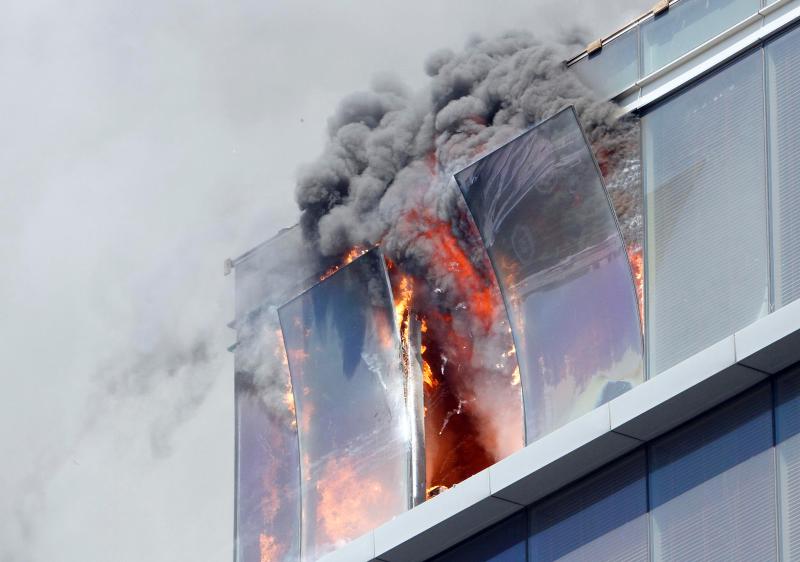1300 737 976
Call us
Live Chat
Call us

Cables are often held responsible for the causes of fires, although more often than not, it is not the failure of the cable that starts the fire, but an overload or failed circuit protection which initiates the fire and the cable materials feed the fire. The majority of cable insulation is made from hydrocarbon, which is an oil based polymer. These are generally not flame retardant. In order to increase the flame retardant properties of these cables, manufacturers add halogens such as chlorine which helps in retarding flame propagation, however, this method also creates a problem, being that in a fire, these cables will release the toxic halogens in the form of an acrid smoke.
Engineers who see the danger in these forms of cable insulation, often request flame retardant and halogen free – low smoke cables. Therefore, cable manufacturers will supply other non-halogenated materials such as polyethylene (XLPE, TPE, EPR) with flame retarding fillers such as alumina-trihydrate (ATH). These are helpful in reducing the spread of flames, although can have an adverse effect on dielectric as well as mechanical and water resistance, so these fillers are generally only in the cable jackets. In many instances cables can be supplied with a flame retardant outer jacket but the internal insulation is NOT flame retardant.
It is vital to know that these cables may pass flame testing of an external fire, although when subjected to prolonged short circuits or high overload, studies have shown that these cables are still highly flammable and can even start a fire. This was published by Olex Cables Australia in 2011.
In Australia, AS/NZS 3008.1.1:2017 allows some cables with suitable insulation to operate at conductor temperatures to 110°C. What has not necessarily been considered, is the intrinsic change that the elevated cable operating temperature may have on the cable’s flammability. If we are going to have a realistic assessment of a cables performance, surely the cables should be tested having been preconditioned to their maximum operating temperature with the knowledge that the hotter a material is the more easily it will burn. It is logical to assume that these cables may have different flame retardant characteristics if operating at temperatures that are higher that the temperatures that the cables have been tested at.
Taking a look at different countries:
Many of the American building standards do not require cables to be halogen free. This is because the viewpoint is that it is better to have highly flame retardant cables which do not propagate fire, rather than minimally flame retardant cables which may spread or contribute to a fire. In short, a small fire with some halogens, may be better than a large fire without halogens.
Europe, UK and Australia, as well as many other countries appear to look at things in a different way. “Halogen free and flame retardant”. However, the reality is that when asked for both characteristics, cable manufacturers customarily compromise between high flame retardant with halogens OR reduced flame retardance without halogens.
The Mineral Insulated Metal Sheath (MIMS) cable technology is the one cable which provides a solution to all the issues relating to the spreading of a flame and the dangers associated with some organic polymer cables. It has been the solution both successfully and reliably used in key public buildings for over 80 years.
The copper jacket, magnesium oxide insulation and copper conductors such as those of MIMS cables, guarantee the cable is effectively fire proof. There is no organic content and so they do not propagate flame or produce smoke. MIMS cables are inorganic, therefore they cannot generate halogen or toxic gasses. These cables meet all current building fire resistance performance standards in Australia and there has been a significant resurgence in its use in both Australia and overseas.
For more information about MIMS cable technology, including in Australia, click here.
Copyright © 2022 Created by Pepper Digital
Disclaimer – Images for illustrative purposes only and may not be representative of the actual resolution of the camera shown.